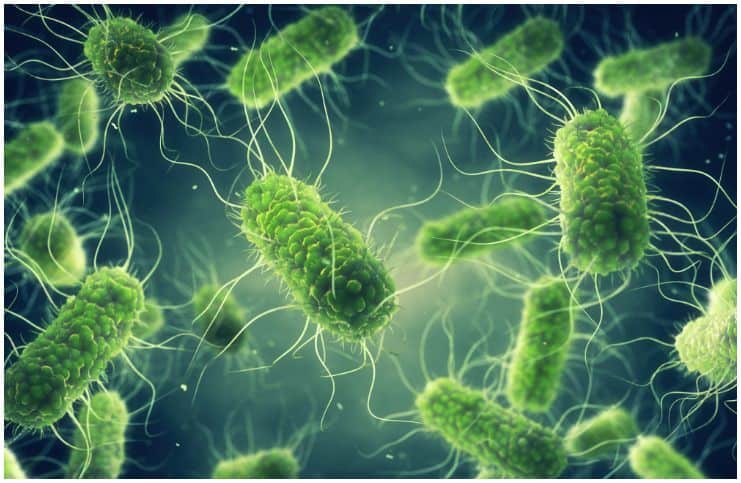Here are 20 interesting facts about salmonella:
1 This organism is named after a pioneering American veterinary scientist – Daniel Elmer Salmon, who discovered the bacteria in 1885.
2 Salmonella species are microscopic organisms which can be found in the digestive tracts of animals and humans, particularly reptiles. Salmonella infections are frequent in the Pacific islands, Asia, the Middle East, Central Africa, and South America.
3 There are approximately 2,500 different strains of salmonella and are one of the main causes of gastroenteritis in both third world and industrialized countries.
4 Salmonella serotype Typhimurium and Salmonella serotype Enteritidis (estimated by the WHO to affect over 17 million people worldwide yearly) are the most usual types in the U.S. Furthermore, Salmonella serotype Javiana is the 5th most frequent form in the U.S.
5 Precise medical tests can be done to analyze the type of Salmonella responsible for an infection. This bacterium is estimated to cause one million foodborne diseases in the U.S. every year, with 450 deaths and 19,000 hospitalizations.
6 Salmonellosis is a zoonosis infection or is a form of food poisoning caused by the Salmonella enterica bacterium. This food poisoning should be considered in any acute febrile or diarrheal illness without an obvious cause.
7 Salmonella infections are more frequent in the summer than winter. It takes from 12 to 72 hours for the salmonellosis symptoms to develop after taking a dose of salmonella.
It lasts for four to seven days and some individuals might call it “stomach flu” when it occurs. Usually, it does not require medical treatment unless the infection spreads from the intestines or the sufferer becomes severely dehydrated.
8 This bacterium is known to enter the bloodstream through the intestines after consuming a food that has been infected.
A Salmonella infection generally causes abdominal cramps, nausea, chills, loss of appetite, diarrhea, fever, vomiting, headache, blood, or mucus in the feces. Additionally, mild dehydration is normal and is easily reversed by drinking plenty of fluids. Diarrhea may last around ten days, however, it may take up to 60 days before bowels return to normal.
9 Anyone can get this bacteria, but the elderly, young children, and people who have weaker immune systems (including people with AIDS, cancer, or alcoholism) have a higher chance of becoming severely ill. There is no vaccine to prevent Salmonella infection.
10 If you have this disease, it is recommended that you avoid contact with other people for at least 24 hours after your symptoms stop.
In order to decrease the length of time during which someone can spread the bacteria, antibiotics are not given. In some patients, especially in elderly and children, the associated dehydration can become life-threatening.
To avoid dehydration, it is recommended to replace electrolytes by drinking things such as Pedialyte, Enfalyte, or other electrolyte solution, Powerade, Gatorade, or other sports drinks, or coconut water.
11 More severe cases of salmonellosis can be treated with antibiotics, but in recent years, there have been medical cases of antibiotic-resistant strains of this organism. Finding the right antibiotic is vital in treating this problem.
12 You can help prevent this infection by not serving any raw eggs, milk, or meat (they are the biggest causes of infection). There are raw eggs found in various recipes, including -Caesar and some salad dressings, homemade hollandaise sauce, homemade ice cream, tiramisu, homemade eggnog, or homemade mayonnaise.
13 Proper cooking will eliminate bacteria. In the kitchen, this bacterium may be transferred from raw to cooked food by contact with kitchen equipment and surfaces, or hands.
People preparing food should make sure that they clean kitchen equipment and wash their hands thoroughly to prevent the spread of bacteria from meat and eggs to other foods in the kitchen.
14 Wash wooden cutting boards and utensils thoroughly with soapy, hot water. Even if the bacteria-containing foods, such as meats, are correctly cooked, any food can become contaminated during preparation if equipment and conditions for food preparation are unsanitary.
15 Occasionally, other foods such as vegetables and fruits can become contaminated with this bacteria through contact with manure used to help them grow.
More importantly, you can get infected after handling pets, particularly reptiles like snakes, lizards, and turtles. Turtles usually carry the bacteria on their shell surfaces and outer skin.
16 Hand washing is a good method to guard against this infection.
17 It is 1 of the 4 important global causes of diarrhoeal diseases.
18 Reiter’s syndrome, also known as reactive arthritis, can occur in people infected with this bacterium. The symptoms include urination, joint pain, and eye irritation.
Typhoid fever, a more serious condition caused by bacteria, is not as frequent in the U.S. Typhoid fever usually occurs in developing countries. About fifty percent of patients develop a slow heartbeat, and some get red-colored spots on the abdomen and chest.
19 Drinking a lot of fluids, eating foods that are high in potassium (such as bananas, mangoes, pomegranate, avocados, dried apricots, prunes, spinach, sweet potatoes, tomatoes, beet greens, red kidney beans, lima beans, chickpeas, lentils, white beans, acorn squash), seeds high in dietary fiber (such as chia seeds and flaxseeds), plus, getting extra sodium in your diet will all help you flush the bacteria faster out of your system.
20 After consuming more than 6.5 million pounds of contaminated beef that was produced by an Arizona company, over 60 people in 16 states were reported with Salmonella infections in October 2018.
READ THIS NEXT:
10 Essential Oils For Carpal Tunnel Syndrome
10 Essential Oils For Kidney Stones Pain Relief
High and Low Histamine Foods List
References https://www.cdc.gov/epicasestudies/downloads/salm_i.pdf https://www.ncbi.nlm.nih.gov/pmc/articles/PMC3834453/ http://www.som.uci.edu/news_releases/
